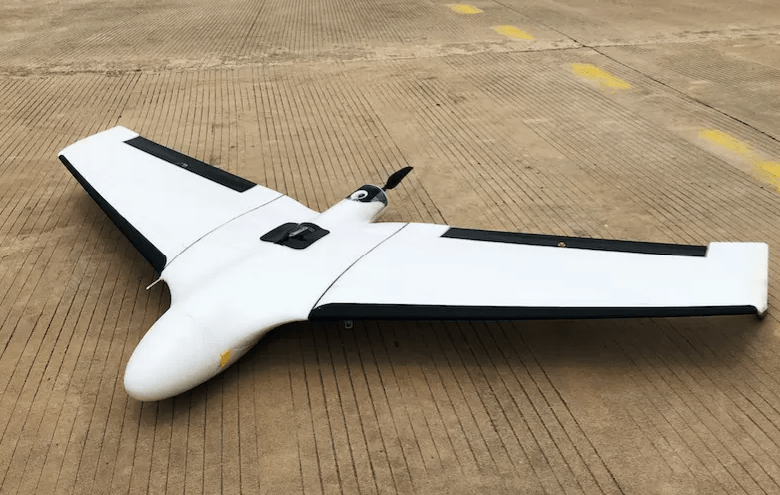Introduction
With the advent of new technologies, drones have become increasingly popular in recent years. Drones are unmanned aerial vehicles that are capable of taking high-resolution photos and videos from different perspectives. Fixed wing drones, in particular, have become a popular choice due to their unique design and advanced capabilities.
What are Fixed Wing Drones?
A fixed wing drone is a type of unmanned aerial vehicle that is designed with a fixed wing structure, similar to an airplane. Unlike quadcopters or other types of drones, fixed wing drones rely on the lift generated by their wings to fly. They are typically more stable in the air and can fly for longer periods of time, making them ideal for various applications.
Advantages of Fixed Wing Drones
There are many advantages to using fixed wing drones, including:
Longer Flight Time
Due to their design, fixed wing drones can fly for longer periods of time than other types of drones. This is because they rely on the lift generated by their wings to stay in the air, rather than using the energy from their motors. This makes them ideal for applications such as surveying, mapping, and surveillance.
Higher Payload Capacity
Fixed wing drones are capable of carrying a higher payload than other types of drones. This is because their wings generate the lift required to keep them in the air, rather than relying on the energy from their motors. This makes them ideal for applications such as carrying sensors or cameras for mapping and surveying.
Greater Range
Fixed wing drones have a greater range than other types of drones, as they are capable of flying longer distances. This makes them ideal for applications such as search and rescue operations, surveillance, and mapping.
Uses of Fixed Wing Drones
Fixed wing drones have a wide range of applications, including:
Agriculture
Fixed wing drones are used in agriculture for various applications, such as mapping, surveying, and monitoring crop health. They can provide farmers with detailed information about their fields, including soil conditions, crop health, and water usage.
Mapping and Surveying
Fixed wing drones are commonly used for mapping and surveying applications. They can be equipped with high-resolution cameras and sensors to capture detailed images and data about the terrain below. This information can then be used to create 3D models, maps, and other types of visualizations.
Surveillance and Security
Fixed wing drones are often used for surveillance and security applications, such as border patrol, crowd control, and monitoring critical infrastructure. They can be equipped with thermal imaging cameras, night vision cameras, and other sensors to detect intrusions and other threats.
Search and Rescue
Fixed wing drones are also used for search and rescue operations, as they can cover large areas quickly and efficiently. They can be equipped with cameras and sensors to locate missing persons, detect hazards, and assess damage from natural disasters.
Applications of Fixed Wing Drones
There are many different applications of fixed wing drones, including:
Military and Defense
Fixed wing drones are commonly used in military and defense applications, such as reconnaissance, surveillance, and target acquisition. They can be equipped with cameras and sensors to gather intelligence and provide real-time information to ground forces.
Environmental Monitoring
Fixed wing drones are also used for environmental monitoring applications, such as wildlife tracking, pollution monitoring, and climate research. They can be equipped with sensors to detect changes in temperature, humidity, and other environmental factors.
Infrastructure Inspection
Fixed wing drones can be used for infrastructure inspection, such as monitoring power lines, pipelines, and other types of infrastructure. They can be equipped with cameras and sensors to detect damage, leaks, and other issues.
Fixed wing drones come in a variety of models and offer different features depending on their intended use. Here are some of the most common fixed wing drone models and their features:
| Model | Flight Time | Max Range | Max Speed | Payload Capacity | Camera Mount |
|---|---|---|---|---|---|
| senseFly eBee X | up to 90 minutes | 12 km | 90 km/h | up to 500g | removable, compatible with several cameras |
| DJI Matrice 300 RTK | up to 55 minutes | 15 km | 82 km/h | up to 2.7 kg | compatible with Zenmuse series cameras |
| Trimble UX5 HP | up to 50 minutes | 20 km | 82 km/h | up to 500g | integrated 24.2 MP camera |
| WingtraOne PPK | up to 55 minutes | 50 km | 130 km/h | up to 1 kg | compatible with Sony RX1R II camera |
| Aeromapper Talon Amphibious | up to 3 hours | 50 km | 90 km/h | up to 1.5 kg | customizable, compatible with various cameras |
1. SenseFly eBee X
The SenseFly eBee X is a high-end fixed wing drone that is designed for mapping and surveying applications. It features a modular design that allows users to switch between cameras and sensors, depending on their needs. The eBee X can fly for up to 90 minutes and has a range of up to 15 km.
2. Parrot Disco-Pro AG
The Parrot Disco-Pro AG is a fixed wing drone that is designed for agriculture applications. It features a multispectral camera that can capture images in four different wavelengths, allowing users to monitor crop health and growth. The Disco-Pro AG can fly for up to 45 minutes and has a range of up to 2 km.
3. DJI Matrice 200 series
The DJI Matrice 200 series is a rugged fixed wing drone that is designed for industrial applications. It features a dual-camera system that can capture both RGB and thermal images, making it ideal for inspections and monitoring. The Matrice 200 series can fly for up to 38 minutes and has a range of up to 7 km.
4. Aerosonde HQ
The Aerosonde HQ is a high-altitude fixed wing drone that is designed for military and defense applications. It features a range of sensors and cameras that can provide real-time intelligence, surveillance, and reconnaissance. The Aerosonde HQ can fly for up to 20 hours and has a range of up to 4,000 km.
5. WingtraOne
The WingtraOne is a fixed wing drone that is designed for surveying and mapping applications. It features a vertical takeoff and landing (VTOL) design, which allows it to take off and land in tight spaces. The WingtraOne can fly for up to 55 minutes and has a range of up to 5 km.
These are just a few examples of the different fixed wing drone models available on the market today. Each model offers its own unique features and capabilities, making them suitable for a wide range of applications.
Key Features of Fixed Wing Drones
Regardless of the specific model, fixed wing drones offer a number of key features that make them valuable tools for a variety of industries. Here are some of the most common features you can expect from a fixed wing drone:
1. Longer Flight Times
Fixed wing drones are designed to fly more efficiently than their multi-rotor counterparts. This means that they can stay in the air for longer periods of time, allowing users to cover more ground and capture more data.
2. Greater Range
Fixed wing drones are typically able to fly longer distances than multi-rotor drones, making them ideal for applications such as mapping and surveying, where large areas need to be covered.
3. Stability in Windy Conditions
Fixed wing drones are generally more stable in windy conditions than multi-rotor drones. This means that they can continue to fly and capture data even when the wind is strong.
4. Payload Flexibility
Fixed wing drones are often designed to accommodate a variety of payloads, including cameras, sensors, and other equipment. This makes them highly versatile tools that can be used for a wide range of applications.
5. Rapid Data Collection
Fixed wing drones are able to cover large areas quickly, making them ideal for applications such as mapping, surveying, and inspection. They can collect data at a much faster rate than traditional ground-based methods, allowing users to make more informed decisions in less time.
Conclusion
Fixed wing drones have become increasingly popular in recent years, due to their unique design
and advanced capabilities. Their ability to fly longer distances, carry heavier payloads, and provide stable flight make them ideal for a wide range of applications, including agriculture, mapping and surveying, surveillance and security, and search and rescue. In addition, they have numerous applications in military and defense, environmental monitoring, and infrastructure inspection.
As the technology behind fixed wing drones continues to advance, their capabilities and applications are likely to expand even further. With their ability to fly longer distances, carry heavier payloads, and provide stable flight, they are poised to become an increasingly important tool in a wide range of industries and applications.
FAQs
- What is a fixed wing drone? A fixed wing drone is a type of unmanned aerial vehicle that is designed with a fixed wing structure, similar to an airplane. They rely on the lift generated by their wings to fly and are typically more stable in the air than other types of drones.
- What are the advantages of using fixed wing drones? Fixed wing drones have several advantages, including longer flight times, higher payload capacity, and greater range. They are ideal for applications such as surveying, mapping, and surveillance.
- What are the applications of fixed wing drones? Fixed wing drones have a wide range of applications, including agriculture, mapping and surveying, surveillance and security, search and rescue, military and defense, environmental monitoring, and infrastructure inspection.
- How do fixed wing drones differ from other types of drones? Fixed wing drones differ from other types of drones in that they rely on the lift generated by their wings to fly, rather than using the energy from their motors. This allows them to fly for longer periods of time and carry heavier payloads.
- What is the future of fixed wing drones? As the technology behind fixed wing drones continues to advance, their capabilities and applications are likely to expand even further. They are poised to become an increasingly important tool in a wide range of industries and applications, from agriculture and environmental monitoring to military and defense.

